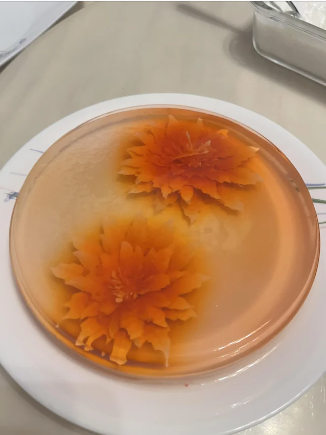Jelly Art Style Magic: How to Create Stunning, Translucent Masterpieces
Introduction
Jelly art style is a mesmerizing technique that results in stunning, translucent masterpieces. Using layers of vibrant colors and soft, flowing designs, this art style mimics the delicate beauty of jellyfish or glass. Whether you’re a beginner or an experienced artist, this guide will inspire you to create your own jelly art wonders.
1. Choosing the Right Medium

The first step to mastering jelly art is choosing the right medium. Artists often use watercolor, resin, or gel-based materials to create the signature translucent effect. Watercolor allows for fluid blending, while resin provides a glass-like finish. Pick a medium that complements your artistic style and desired result.
2. Layering Colors for Depth

The magic of jelly art comes from the layering of colors. Begin with a light base color, then gradually add layers, letting each one dry before applying the next. This layering technique helps create depth and dimension, giving your artwork a sense of movement and transparency.
3. Creating Organic Shapes Inspired by Nature

One of the beauties of jelly art is the freedom to mimic organic shapes, such as waves, jellyfish, or flowers. By letting your colors flow naturally and embracing the unpredictability of the medium, you can create fluid, nature-inspired designs that evoke movement and softness.
4. Experimenting with Light and Shadow

Since jelly art often features translucent elements, playing with light and shadow can enhance its depth. Use lighter colors to highlight areas where light would naturally shine through and darker tones for shadows. This adds realism and enhances the delicate, glowing effect typical of jelly art.
5. Using Resin for a Glossy Finish

Resin is a fantastic medium for jelly art because it creates a glossy, glass-like finish. After completing your painting, apply a layer of clear resin to seal the piece. The resin enhances the colors, making them appear even more vibrant and translucent, while adding durability and a polished look.
6. Creating 3D Jelly Art

Take your jelly art to the next level by experimenting with three-dimensional effects. You can use thick layers of paint, resin, or gel to build up parts of the artwork, creating a raised, tactile surface. This 3D technique adds depth and allows viewers to experience the artwork from multiple perspectives.
Conclusion
Jelly art style offers endless possibilities for creating stunning, translucent masterpieces. By combining the right mediums, colors, and techniques, you can produce art that captures the light, depth, and fluidity of this magical style. Whether you’re painting, sculpting, or using resin, jelly art is sure to inspire your next creative project. So grab your supplies and let the magic begin!
